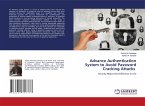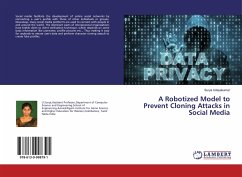The proposed approach employs data mining and forensic techniques to identify the representative SC-patterns for a user. The time that a habitual SC pattern appears in the user's log file is counted, the most commonly used SC-patterns are filtered out, and then a user's profile is established. By identifying a user's SC-patterns as his/her computer usage habits from the user's current input SCs, the PSAIA resists suspected attackers. The experimental results demonstrate that the average detection accuracy is higher than 94% when the decisive rate threshold is 0.9, indicating that the PSAIA can assist system administrators to point out an insider or an attacker in a closed environment. The further study will be done by improving PSAIA's performance and investigating third-party shell commands.
Bitte wählen Sie Ihr Anliegen aus.
Rechnungen
Retourenschein anfordern
Bestellstatus
Storno








